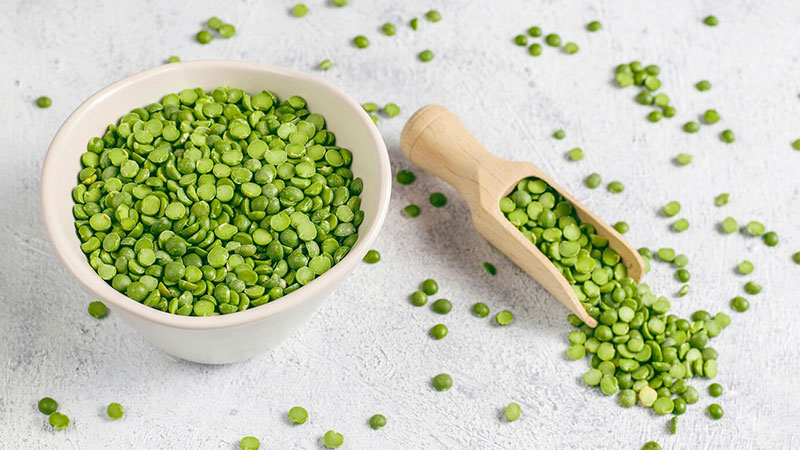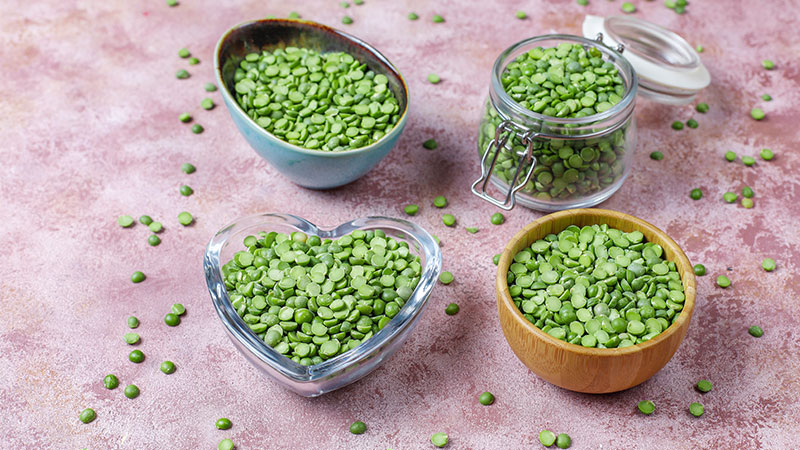
Green lentils, those small yet mighty legumes, pack a powerful punch when it comes to health benefits. Often underestimated in the culinary world, these nutrient-dense gems are essential for anyone aiming to enhance their diet.
Rich in fiber, green lentils help lower cholesterol levels, reducing the risk of cardiovascular disease and promoting heart health.
Beyond just fiber, green lentils boast a wealth of antioxidants, which play a crucial role in combating oxidative stress and inflammation.
This makes them a valuable ally in the fight against chronic conditions like heart disease, diabetes, and certain cancers.
Their unique phytochemicals, including polyphenols and flavonoids, further protect cells from damage, supporting overall longevity and well-being.
Whether you’re a vegetarian, vegan, or simply health-conscious, incorporating green lentils into your meals can be transformative.
Their impressive nutritional profile and potential disease-preventing properties make them a must-have addition to your dietary repertoire.
1. Strengthen Disease Resistance
Regular consumption of green lentils can promote health by reducing the risk of chronic conditions like diabetes, obesity, heart disease, and some cancers.
They contain polyphenols with anti-inflammatory and antioxidant properties. Emphasizing the Mediterranean diet, which includes green lentils, may lead to better health outcomes.
Lentils also help manage diabetes due to their low glycemic index, ensuring stable blood sugar levels. Also, present fiber aids in preventing cancer growth.
With positive impacts on cholesterol, they contribute significantly to disease resistance. Including green lentils in meals supports overall well-being.
2. Reduce Blood Pressure
Green lentils effectively lower blood pressure through their rich potassium and magnesium content. Potassium found in lentils, helps counteract the negative effects of salt, a known contributor to hypertension.
Magnesium supports the reduction of blood pressure naturally. Studies from trusted sources have identified lentils as a key component of the DASH eating plan—a dietary strategy recommended by the National Heart, Lung, and Blood Institute for controlling blood pressure.
Pairing green lentils with whole grains further optimizes these benefits by providing essential amino acids lacking in lentils alone.
3. Enhance Heart Health
Lentils support heart health by lowering cholesterol and blood pressure. They contain folate and vitamin B1, each crucial for maintaining cardiovascular well-being.
Folate helps protect the heart by promoting red blood cell formation and reducing risks of heart disease.
Eating lentils can lead to greater reductions in blood pressure compared to chickpeas or peas. This legume plays an essential role in heart-friendly diets.
Nutrient-rich, lentils improve heart function and potentially lower bad cholesterol levels. Including lentils regularly can bolster heart health. This makes them a strategic addition for those aiming to prevent heart-related issues.
4. Increase Energy Levels
Green lentils boost energy. Especially for those with anemia, their iron content makes hemoglobin, which is crucial for oxygen transport.
Half a cup offers 15% of daily iron needs. When paired with vitamin C sources like tomatoes or bell peppers, iron absorption improves. This nutritional combination effectively invigorates the body.
Vegans and vegetarians greatly benefit since lentils fit their dietary preferences. Incorporating lentils into meals ensures sustained energy levels throughout the day. Lentils’ ability to provide and sustain energy exemplifies their value in a balanced diet.
5. Support Digestive Health
Green lentils enhance digestive health due to their high fiber content. They provide insoluble fiber, aiding regular bowel movements. By fueling beneficial gut bacteria, lentils help maintain a balanced microbiome.
People consuming high-fiber foods like lentils may experience reduced colorectal cancer risk. Dr. Homan highlights that fiber supports immunity while regulating bowels.
For those seeking digestive wellness, incorporating green lentils into meals offers significant benefits.
Types of Lentils

Lentils come in various types, each offering distinct flavors, textures, and culinary uses. Understanding these differences can enhance meal choices and nutritional intake.
Brown Lentils (European Lentils)
Brown lentils are the most affordable and versatile type. They maintain firmness when cooked, making them ideal for soups and as a substitute for black beans in burgers.
Commonly ranging from light brown to black, they offer a mild earthy flavor. When overcooked, these lentils can become mushy, making them perfect for thick stews.
Green Lentils (French Lentils)
Known for their nutty taste, green lentils or French lentils hold their shape during cooking. This characteristic makes them excellent candidates for salads.
Their peppery flavor adds depth to dishes, enhancing the eating experience. Green lentils offer substantial nutritional benefits, contributing to a healthy meal plan.
Red Lentils
Red lentils boast a mild, sweet flavor, cooking faster than other types. They become soft when heated, ideal for purees and Indian dals.
These lentils appear red due to the hulled brown massor lentils, popular in Middle Eastern and Indian cuisines. When used in soups, they provide a creamy consistency.
Black Lentils
Black lentils, also known as Beluga lentils, resemble caviar. They’re the tiniest among lentils, offering a distinct, slightly earthy flavor.
Due to their small size and unique appearance, they’re more expensive. White lentils are black lentils without the hull, offering a different culinary appeal.
Tips for Consuming Lentils
Including lentils in meals enhances their nutritional value while also adding texture and flavor.
Add Lentils to Soups and Stews
Lentils can transform soups and stews into hearty dishes. They thicken the broth and provide protein and fiber. By simmering lentils with favorite vegetables, herbs, and stock, individuals enjoy not only the warmth but also the nutritional boost.
Green Salads with Lentils
Green lentils add a nutty flavor and firm texture to salads. Unlike other types, they hold their shape, making them perfect for mixing with greens, tomatoes, and vinaigrette. These salads become more filling, offering a satisfying meal that still feels light.
Lentils into Grain Dishes
Grain dishes gain depth and nutrition with lentils. Mixing them into rice or quinoa brings protein and complexity. By pairing lentils with whole grains, the amino acid profile is complete, optimizing nutritional benefits, and offering a complete meal solution.
Lentils FAQs
Green lentils offer numerous health benefits and adding them to your diet can enhance wellness. Below are frequently asked questions about eating lentils.
Can you eat lentils everyday?
Consuming lentils daily is safe and beneficial due to their rich nutritional profile. They provide essential nutrients like fiber, protein, and iron, supporting heart, digestive, and overall health. Regular intake can contribute to a balanced diet and prevent chronic diseases.
Is it bad to eat lentils that are not cooked all the way?
Eating undercooked lentils may cause digestive issues. They contain lectin, a toxin that can induce discomfort if not broken down by heat. Fully cooking lentils ensures they lose this toxin, making them safe to eat.
Are lentils healthier than rice?
Lentils surpass rice in nutritional value, offering higher amounts of protein and fiber. They support better digestion and can promote weight management. Including lentils instead of rice introduces more nutrients essential for health.
Are lentils or quinoa healthier?
Lentils and quinoa both offer health benefits but serve different nutritional purposes. Lentils provide more protein and fiber, while quinoa is a complete protein with all essential amino acids. Depending on dietary needs, each has its unique advantages.
Which color lentils are the healthiest?
While all lentil varieties are nutritious, green lentils hold their shape well and uniquely balance nutrients, making them ideal for various dishes. They retain nutrient content through cooking, unlike some other types.
How long can cooked lentils survive in the refrigerator?
Cooked lentils typically last up to 5 days when stored in an airtight container in the refrigerator. This retention of freshness maintains its nutritional benefits until itõs ready to be used in meals.
How can you tell if cooked lentils have gone bad?
Spoiled cooked lentils typically emit an unpleasant odor and develop a slimy texture. Discoloration may also occur. If any of these signs are present, it is best to discard them for safety.
